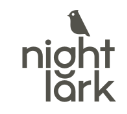How To Find The Best Duvet For You
Regarding duvets, you might want different duvets for the winter and summer — just consider how you’ll be able to save on your energy bills by having a warm (high-tog) duvet this winter. The Fine Bedding Company offers a large selection of different duvets with various tog ratings. For example, their Breathe® duvets come in several tog ratings to cover your needs year-round. For more on how to pick the best duvet for you, take a look at their Duvet Buying Guide.
How To Find The Best Bedding For You
If you often feel too hot in bed, you’re bound to benefit from bedding specifically designed to keep you cool. Their Smart Temperature collection harnesses temperature-regulating technology from Swiss textile innovators, HeiQ®. This technology helps dissipate heat as temperature rises, minimising deviations from the ideal in-bed temperature when you’re prone to overheating.
Finally, consider the materials from which your choices of mattress and bedding are made. The Fine Bedding Company prides themselves on carefully and ethically sourcing only the finest materials for its products, such as the DOWNPASS-certified Goose Feather and Down used in their Natural Filled Bedding.
How To Optimise The Air In Your Bedroom
Nobody sleeps well when it’s too cold or too hot and, as we touched on in the second article in this series, there are also sleep issues driven in part by abnormalities in body temperature regulation. While there’s not actually been much research on this, an air temperature of about 17 to 20°C is about right for most of us. To keep your bedroom cool and well-ventilated, opening a window is sometimes enough. This method has the added benefit of reducing the accumulation of carbon dioxide in your room.
The relevance of this is that there’s some evidence that high levels of carbon dioxide erode sleep quality. To further enhance air quality, you might like having a plant or two in your room too. Some, such as peace lilies, can lower levels of environmental pollutants. If opening a window alone doesn’t get your room temperature to your preferred sweet spot, using a bedside or ceiling fan can help. We suggest avoiding air conditioning when possible, for ironically air conditioning units are particularly prone to exacerbating global warming due to the combination of their waste heat and high energy use.
How To Prevent Noise From Disturbing Your Sleep
Noise such as sounds from vehicles can disrupt sleep, so you’ll help protect your sleep by minimising exposure to any noises that could interrupt it. Probably the simplest way to achieve this is by using earplugs. It’s possible that you’ll need to try a few pairs until you find ones that are right for you, but this exploration should be worth it in the long run.
As a side note, scientists are interested in whether we can use certain types of noise to enhance sleep. At present, however, there’s probably not enough high-quality research to recommend any particular type of noise for sleep, bearing in mind that excessive total noise exposure is bad for hearing.
How To Set Up Your Bedroom Lighting For Great Sleep
Excessive exposure to light before and during the sleep period can worsen sleep and thereby health, so changes to your bedroom lighting might help you sleep better. While you’re in bed asleep or intending to sleep, it’s best to be in a room that is as dark as possible. To achieve this, use blackout blinds or a sleep mask if you’re exposed to light pollution from the outdoors.
The overhead lights in your bedroom would ideally be dimmable, but you might want to favour lights at eye level or below in your room. The spectral composition of the light matters, and “warm white” ones are ideal — choose lightbulbs with a colour temperature below 3,000 Kelvin. A simple way to envision the best kind of lighting in your bedroom is that it should mimic a campfire — low, warm-coloured, and only bright enough to see. Regarding devices, remove non-essential light-emitting devices from your room too — so no TV or smartphones, if possible! If you must wake to an alarm, get one that dimly emits red light, which is less alerting and disruptive to your body’s clock than other colours.
Enjoy Your New Sleep Sanctuary!
We’ve covered a lot of ground in this article, so please don’t feel you must strictly comply with all the guidance. Instead, implement two or three of the bedroom modifications detailed above and you should soon be on your way to more restful sleep. For now, if you have any questions, reach out @finebeddingco on Instagram or Facebook.






